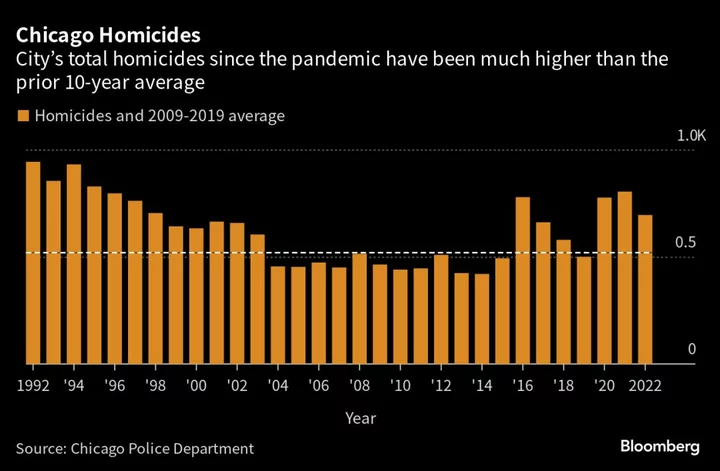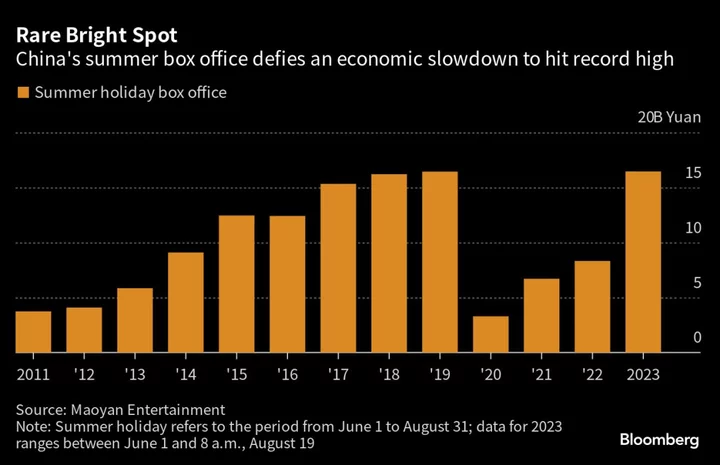PHOENIX (AP) — I blink, and the edges of my eyelids feel like they are being singed. My cheeks burn as if they are being pressed with a hot iron ready to tackle a pile of wrinkled shirts. It is 4 p.m. I look at my 12-year-old son, whose face is flushed. He lets out a groan and puts his hand on his forehead to shield his eyes from the blistering sun.
It is 117 degrees Fahrenheit (47 degrees Celsius).
My family knows being in temperatures like this is dangerous. We've lived here for four years. This time, though, we are outside for only a few minutes to conduct an important experiment: How long will it take to cook a quesadilla on the sidewalk?
Such is life these days in Phoenix, one of the hottest cities in the world. But for us, this summer is our last here; this weekend, I’m moving with my family to New York for my job as — wait for it — The Associated Press’ global climate and environment news director.
I'M LEAVING TOWN DURING A UNIQUE SUMMER FOR PHOENIXWorking with AP journalists around the globe on climate change stories, as I have for the past year since taking on this role, I recognize the irony. I'm leaving a city that is having a major climate change moment during a summer we may remember as an inflection point in both in the advancement of global warming and its devastating extreme weather impacts and the developed world’s consciousness of what is happening. Developing countries have long been hit particularly hard by climate change.
Earlier this week, Phoenix broke its own record for a major city with consecutive days over 110 degrees Fahrenheit (43 degrees Celsius). That isn’t just something for the record books, a quirky factoid for weather buffs. It’s significant because there is no end in sight to the heat — and all of July could see 110-degree temperatures or higher.
That would be uncharted territory even for a city accustomed to dealing with extreme heat. It also raises questions about the long-term viability of a metropolitan area that was America's fastest growing between 2010 and 2020, according to the U.S. Census.
For decades, scientists have been warning that the continued burning of fossil fuels would lead to a warming of the planet and more frequent and more intense extreme weather events. We have seen this play out in weather-related disasters around the globe, and Phoenix is not immune. But when the already extreme becomes super extreme, it provides a window into what could be a scary future.
A ‘DESERT RAT’ MOVES ON“I’m a desert rat,” I’ve heard friends say, and four years in I know what they mean.
The throngs that have moved here haven’t just come for the jobs, though booms in tech, higher education and other industries have brought many. Nor are they just here for cheaper housing compared to other major Western U.S. cities (it doesn’t exist anymore; Phoenix has gotten very expensive).
Many people have a deep desire to be here, which may sound strange to many Americans who know only of the city’s infamous extreme summer heat. The Arizona desert, filled with giant saguaro cactuses, looming palm trees and menacing terrain, with the powerful sun always beaming above, has a beauty that evokes feelings of freedom and possibility.
Eight months a year, Phoenix weather is nothing short of amazing. Sunny, temperatures ranging from 60 to 85 degrees Fahrenheit (16 to 29 degrees Celsius) and clear skies. Just about every day. The city and surrounding cities like Mesa, Gilbert, Scottsdale, Tempe, Chandler — all part of the larger metropolitan area locally referred to as “Valley of the Sun" — are easy to navigate because the land is flat. All has been designed in such a way that if feels like one big giant grid.
Then the summer comes, and daily life must change drastically. Biking, hiking, camping and numerous other outdoor activities common during eight months, all but come to a halt. Construction workers do shifts that begin in the middle of the night and finish by the early morning. Kids go to trampoline parks, gyms and inside camps.
People with pools at home take dips early in the morning and at night, as during the day the sun can make the water feel like a jacuzzi. Residents with means take their vacations out of state during the summer, or make weekend trips to Flagstaff, a two-hour drive north where temperatures are about 25 degrees cooler than Phoenix because of the high elevation.
SOME PARTING THOUGHTS BEFORE DEPARTUREWhile most people figure out ways to cope, some are left behind. Homeless people, a population that has been growing, are particularly exposed. Shelters and cooling centers, which are essentially public buildings like libraries kept open for long hours, are all part of attempts to get them off the streets. With good reason: most heat-related deaths in Phoenix are not from people in their homes, but rather people outside.
But for most residents, while the summers are brutal, we get into a flow because the weather has a rhythm.
For several days at a time, the temperatures will top 110 degrees, sometimes into the high teens or get to 120 (49 degrees Celsius). But then, from one day to the next, the daily high temperatures will drop to the low 100s or even high 90s (32 to 38 degrees Celsius), which, after days of more intense heat, feels kind of breezy.
The drops happen from cooler winds coming in, or intense bursts of rain, called monsoons. We all go outside, particularly in the mornings and late evenings, when temperatures drop enough to be outside and not feel like your body is trapped in an oven.
After a few days of partial relief, the intense heat comes back. And we all go back inside and wait it out. We repeat the cycle while looking forward to the fall. That pattern of intense heat and temporary drops held even during 2020, also a record-breaking summer with 53 total days over 110.
What worries me about this heat wave is that it’s not breaking. This could be a harbinger of future heat waves, in both Phoenix and around the world. As of Saturday, it's 23 straight days of temperatures over 110 degrees; forecasts show the extreme heat could continue at least another 10 days. So far, city officials and most Phoenix residents, seem to be managing. But even if the city gets by largely unscathed, this period may well be viewed as the beginning of major changes — ones that are not for the better.
And for those of you who have stayed with me this long, let's not forget about the strange case of the sun-baked quesadilla. Did it cook? The answer: In 15 minutes, the cheese had melted into clumps, and the flour tortilla was hardened.
“Gross,” said the 12-year-old. “I'll take a bite," I responded.
Turns out he was right. We got rid of the quesadilla. Then, standing there in the Phoenix sun, we did the only sensible thing possible given everything around us: We went back inside and resumed packing, with our goodbye to this strangely baked city just ahead of us.
___
Associated Press climate and environmental coverage receives support from several private foundations. See more about AP’s climate initiative here. The AP is solely responsible for all content. Follow Peter Prengaman on Twitter at http://twitter.com/peterprengaman









